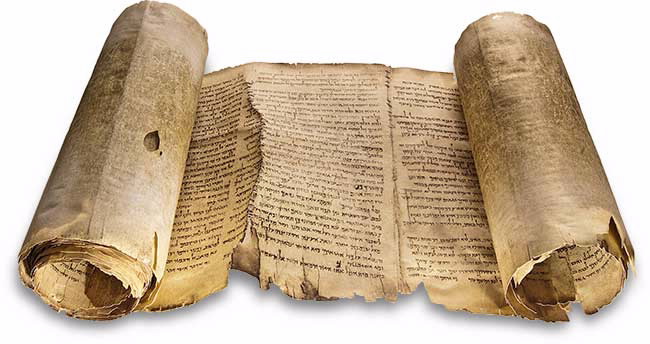ANSTO carbon dating tests of rare manuscripts dubbed the ‘Dead Sea Scrolls of Buddhism’ have confirmed the priceless texts are from the first and fifth centuries AD and could be the missing link in Buddhist history.
 |
| Dead sea scrolls. |
The tests were carried out on two out of three international collections, the Senior and Schøyen collections which are owned by private individuals. The third is owned by The British Library. Results showed that two manuscripts from the Senior collection date between the years 130 and 250 AD and three of the Schøyen texts between the first and fifth century AD.
According to Dr Mark Allon, an Australian Research Fellow from the University of Sydney who is translating the texts and commissioned the ANSTO work, the date confirmation is an exciting step towards filling the historical void that existed before the scrolls’ discovery, in particular the Senior results.
“Buddhism was originally an oral tradition but little is known about how it developed from spoken word to written word, so the discovery and date confirmation will give us a unique insight into the development of Buddhist literature,” he said.
“In addition, although Buddhism flourished throughout Asia and there is an enormous amount of literature available today, it totally disappeared from India, central Asia and the Indonesian archipelago and with it many literary traditions,” explained Dr Allon. “The new manuscripts are therefore the missing link in the historical chain.
“The Senior collection dating is of particular importance as this result makes a major contribution to Indian chronology in showing that an early date of 78 AD for a key historical figure, the Kushan emperor Kanishka, is no longer tenable.”
At ANSTO, Dr Geraldine Jacobsen was in charge of the delicate chemistry needed to prepare the samples for dating. She explained that before analysing the actual scrolls – which were made out of birch bark – a sample chemistry test needed to be conducted.
“As we have never tested birch bark before we needed to ensure we got the chemistry right as sometimes samples don’t survive the pre-treatment stage,” she said.
“In the treatment, we had to remove any impurities that might have affected the date and as we had no idea how the scrolls were handled or if any conservation attempts were made, we had to use a series of organic solvents, such as hexane, chloroform and methanol to remove grease or resins.
“This process was followed by washing with acid and alkaline solutions which remove other possible contaminants, including the solvents we used in the first step, as these would also affect the dating if they remained.”
Another problem Dr Jacobsen faced was the delicate nature of the birch bark which was extremely fragile and might be destroyed during treatments. However the test sample showed the bark could survive the chemistry so they proceeded to go ahead with the dating process in one of ANSTO’s particle accelerators.
This process is called accelerator mass spectrometry (AMS) and tests commenced on the scrolls in 2004. Carbon dating dates the material itself, in this case when the bark grew, not the time the writing took place. However by dating the bark it gives a very good indication of when the texts were written. The scrolls discovery and ANSTO’s dating of them has added valuable information to the annals of Buddhist history.
The scrolls’ discovery was a result of upheaval in war-torn Afghanistan following its war with Russia, civil war and consequent rule under the Taliban, which was hostile to its non-Islamic heritage. This resulted in many archaeological sites being plundered or destroyed with some artefacts making their way onto the antiquities market where the scrolls appeared.
Dr Allon approached ANSTO in 2003 to date the manuscripts and after being awarded a $3 100 grant from The Australian Institute of Nuclear Science and Engineering. The carbon dating AMS tests were carried out by ANSTO’s Dr Ugo Zoppi who has since returned to the United States to continue his scientific career in this field.
Published: 09/03/2006

